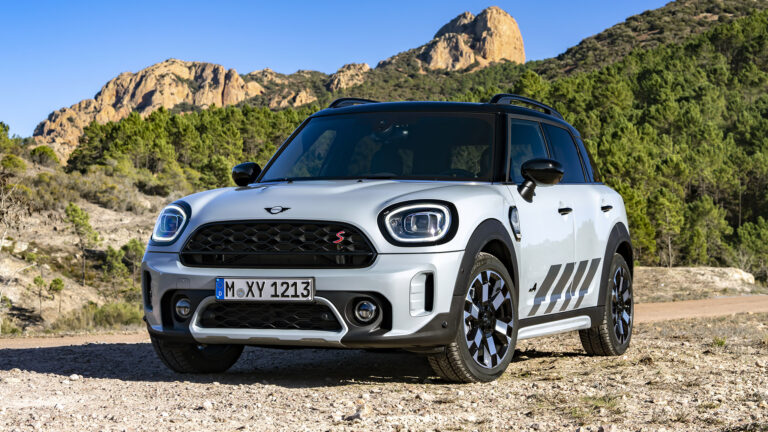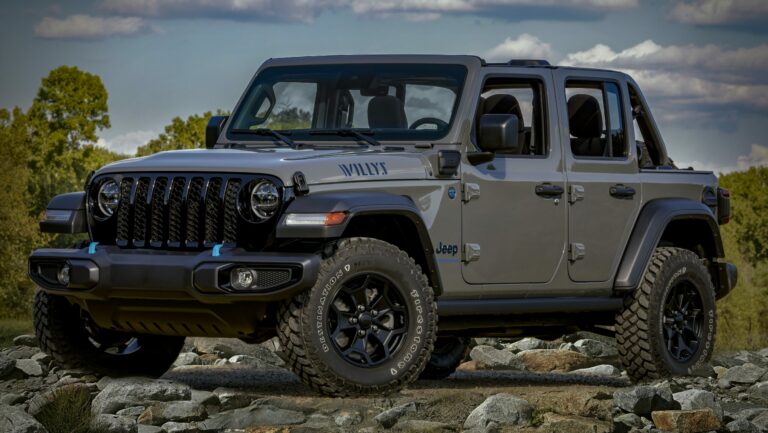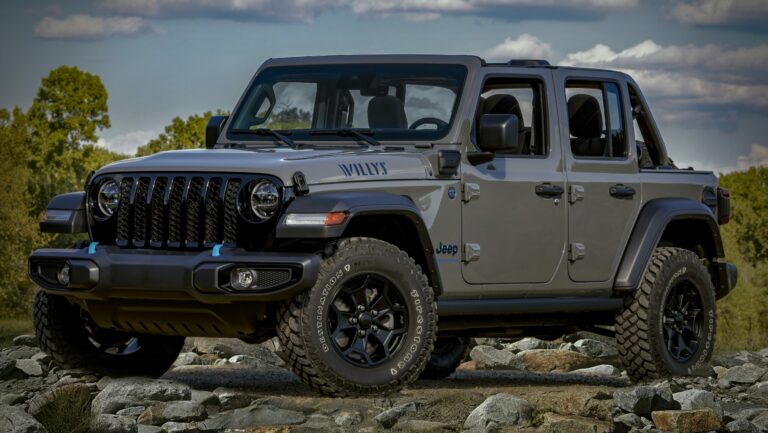89 Jeep Cherokee: The Enduring Icon of American Utility
89 Jeep Cherokee: The Enduring Icon of American Utility jeeps.truckstrend.com
The automotive landscape is littered with fleeting trends and forgotten models, but every so often, a vehicle emerges that transcends its time, becoming an enduring icon. The 1989 Jeep Cherokee, affectionately known by its chassis code "XJ," stands as a testament to this phenomenon. More than just a utilitarian vehicle, the ’89 Cherokee represents a pivotal moment in SUV history, solidifying the segment’s appeal long before it became a mainstream staple. It’s a vehicle that captured the essence of rugged capability, practical design, and surprising versatility, cementing its place in the hearts of enthusiasts and practical drivers alike. For many, the ’89 XJ isn’t just a car; it’s a lifestyle, a project, a dependable workhorse, and a gateway to adventure. This comprehensive guide will delve into what makes the 1989 Jeep Cherokee so special, exploring its design, capabilities, ownership experience, and lasting legacy.
A Legacy Forged: The XJ’s Place in History
89 Jeep Cherokee: The Enduring Icon of American Utility
The Jeep Cherokee XJ made its debut in 1984, breaking away from the traditional body-on-frame construction that dominated the SUV market. Its unibody (monocoque) design was revolutionary for an SUV, offering a lighter, more rigid, and more car-like driving experience without sacrificing the legendary off-road prowess Jeep was known for. By 1989, the XJ was firmly established as a best-seller, having undergone minor refinements since its initial release. This particular model year sits comfortably within the "renix" era (named after the Bendix-Renault engine management system), just before the major internal changes of the early 90s, making it a sweet spot for many enthusiasts due to its robust simplicity and readily available parts.
The ’89 Cherokee offered a compelling blend of compact dimensions, impressive ground clearance, and robust four-wheel-drive systems, making it equally adept at navigating urban jungles and tackling challenging trails. It democratized the SUV experience, offering a more accessible and efficient alternative to larger, truck-based behemoths, while still delivering on the promise of adventure.
Engineering & Design: The Heart of the Beast
The ’89 Jeep Cherokee’s appeal begins with its fundamental design and engineering.
Unibody Construction: The most significant innovation was its lightweight unibody construction. This design integrated the frame and body into a single structure, reducing weight, improving rigidity, and lowering the center of gravity. This contributed to better on-road handling and fuel efficiency compared to its truck-based competitors, while still being remarkably strong for off-road abuse.
Powertrain Options:
- 4.0L AMC Inline-Six (I6): The undisputed star of the show. This legendary engine, producing 177 horsepower and 220 lb-ft of torque in 1989, is renowned for its torquey nature, incredible durability, and relative simplicity. It’s often cited as one of the most reliable engines ever built and is a primary reason for the XJ’s longevity and popularity. Its robust design allows it to handle high mileage with proper maintenance.
- 2.5L AMC Inline-Four (I4): Also available, this engine offered better fuel economy but significantly less power (around 121 hp). While adequate for light duty, most enthusiasts seek out the 4.0L for its superior performance and off-road capability.
- Transmission Options: The 4.0L was typically paired with either the Aisin-Warner AW4 4-speed automatic transmission, known for its bulletproof reliability, or the Aisin AX-15 5-speed manual transmission, also highly regarded for its strength.
- Transfer Cases: Two main options were available:
- New Process NP231 Command-Trac: A part-time 4WD system, meaning it should only be used on loose surfaces (dirt, snow, sand) to prevent driveline binding. Simple, robust, and popular for off-roading.
- New Process NP242 Selec-Trac: A full-time 4WD system that can be used on any surface, including pavement, offering more flexibility. It also includes a part-time 4WD low range. This is often preferred for those who encounter varied driving conditions.

- Axles: The front typically featured a Dana 30, and the rear could be either a Dana 35 (less desirable for heavy off-roading due to weaker shafts) or the stronger Chrysler 8.25 (which became more common in later XJs but can be found in some ’89s).

Exterior & Interior: The ’89 Cherokee boasts a timeless, boxy design that is both functional and aesthetically pleasing. Its compact footprint belies a surprisingly spacious interior, especially for passengers in the front. The utilitarian cabin, while not luxurious, is highly functional with simple, durable materials. Visibility is excellent due to large windows, and the dashboard layout is straightforward, prioritizing ease of use.

Performance & Capability: The Unsung Hero
On the road, the ’89 Cherokee, particularly with the 4.0L engine, offers decent acceleration and a relatively comfortable ride for an SUV of its era. Its unibody construction provides a more refined driving experience than traditional body-on-frame trucks. However, it’s off the beaten path where the XJ truly shines.
- Off-Road Prowess: Thanks to its high ground clearance, short overhangs (providing excellent approach and departure angles), and robust 4WD systems, the ’89 Cherokee is an incredibly capable off-roader right out of the factory. Its relatively light weight allows it to float over obstacles that would bog down heavier vehicles. The strong low-range gearing in both transfer cases provides ample torque for crawling over rocks or through mud.
- Towing Capacity: With the 4.0L engine and proper equipment, the 1989 Jeep Cherokee can tow around 5,000 pounds, making it suitable for hauling small boats, utility trailers, or even smaller campers.
Owning an ’89 Jeep Cherokee Today: A Timeless Investment
For many, owning an ’89 Cherokee today is more than just transportation; it’s a passion project, a reliable daily driver, or an affordable entry into the world of off-roading.
Why Buy One Now?
- Affordability: They are remarkably inexpensive to acquire compared to newer SUVs, offering incredible value for money.
- Reliability: The 4.0L engine and AW4 transmission are legendary for their longevity, often reaching 300,000+ miles with proper care.
- Modifiability: The aftermarket support for the XJ is immense, allowing owners to customize everything from suspension and tires to bumpers and drivetrain components.
- Simplicity: Pre-OBDII (On-Board Diagnostics II) models like the ’89 are easier to diagnose and repair for the average DIY mechanic, often without specialized tools.
- Nostalgia & Community: There’s a vibrant and welcoming community of XJ enthusiasts eager to share knowledge and help.
Common Issues & Maintenance Points: While robust, 35-year-old vehicles have their quirks:
- Rust: The most significant enemy. Check rocker panels, floorboards, rear quarter panels, and subframe areas.
- Cooling System: Prone to overheating if not meticulously maintained. Radiators, water pumps, thermostats, and fan clutches are common replacement items.
- Electrical Gremlins: Minor electrical issues (windows, gauges, lights) can arise due to old wiring or corroded grounds.
- Vacuum Leaks: Can affect idle and engine performance.
- Leaf Springs: Rear leaf springs tend to sag over time, leading to a "squatted" appearance.
- Steering & Suspension Wear: Ball joints, tie rods, and bushings will eventually need replacement.
- Oil Leaks: The 4.0L is notorious for minor oil leaks, especially from the rear main seal, though often not critical.
Parts Availability: Despite its age, parts for the ’89 Cherokee are readily available from both OEM suppliers (through Mopar/Jeep) and a vast aftermarket, making repairs and modifications relatively straightforward and affordable.
Buying Guide: What to Look For
When considering an ’89 Jeep Cherokee, a thorough inspection is crucial:
- Rust: This is paramount. Inspect the frame rails (especially near the steering box), rocker panels, floorboards (lift carpets), door sills, and rear quarter panels. Surface rust is manageable, but extensive rot is a deal-breaker.
- Engine: Listen for knocking, ticking (especially lifters on cold start, which can be normal for a bit), or excessive smoke. Check for significant oil leaks. Ensure the cooling system looks well-maintained (clean coolant, no leaks).
- Transmission: Test drive to ensure smooth shifts in both automatic and manual versions. Check for slipping or harsh engagement.
- 4WD System: Engage 4-high and 4-low (on a loose surface if possible) to ensure the transfer case shifts properly and the system engages.
- Suspension: Look for sagging rear leaf springs. Bounce each corner to check shock absorber effectiveness. Listen for clunks or squeaks over bumps.
- Electrical: Test all lights, wipers, power windows, radio, and dashboard gauges.
- Interior: While not a deal-breaker, a clean interior indicates a more cared-for vehicle. Check for water leaks from the windshield or sunroof.
Tips for Maintaining & Modifying Your ’89 XJ
- Cooling System Overhaul: If you buy one and it hasn’t been done, replace the radiator, water pump, thermostat, hoses, and fan clutch. This is critical for 4.0L longevity.
- Regular Fluid Changes: Engine oil, transmission fluid, transfer case fluid, and differential fluids are vital for extending the life of your drivetrain.
- Rust Prevention: Clean underneath regularly, especially if you live in a snowy or coastal area. Apply rust inhibitors.
- Basic Off-Road Mods: A 2-3 inch lift kit with slightly larger tires (30-31 inches) vastly improves off-road capability without significant modifications to the driveline. Upgraded skid plates and rock sliders are also wise investments.
- Stay Stock (Initially): If it’s your first XJ, fix all the known issues and drive it stock for a while before diving into major modifications. This helps you understand its baseline performance and what upgrades truly benefit your specific use case.
Price Guide for an 89 Jeep Cherokee
It’s important to note that prices for a 1989 Jeep Cherokee vary wildly based on condition, mileage, region, and modifications. These are general ranges as of late 2023/early 2024:
| Category | Condition Description | Estimated Price Range (USD) |
|---|---|---|
| Original MSRP | For historical context: Base models in 1989. | $11,000 – $18,000 |
| Project Vehicle | Runs, but needs significant mechanical work, rust repair, or interior restoration. Often non-running or barely running. | $500 – $2,500 |
| Daily Driver | Runs and drives reliably, may have cosmetic flaws (dents, faded paint), minor mechanical issues, or higher mileage. Suitable for immediate use with some TLC. | $2,500 – $6,000 |
| Well-Maintained | Good mechanical condition, minimal rust, decent paint and interior. Ready to drive and enjoy with standard maintenance. May have some tasteful modifications. | $6,000 – $12,000 |
| Restored/Highly Modified | Professionally restored or extensively modified for specific purposes (e.g., extreme off-roading, overland build). Excellent mechanical and cosmetic condition, often with upgraded components. | $12,000 – $25,000+ |
Note: Exceptional, low-mileage, original condition examples can occasionally fetch higher prices from collectors.
Frequently Asked Questions (FAQ) about the 89 Jeep Cherokee
Q1: Is the 4.0L engine truly reliable?
A1: Yes, the 4.0L AMC inline-six is legendary for its durability and longevity. With regular maintenance (especially cooling system care and oil changes), it can easily last 200,000 to 300,000 miles or more.
Q2: What are the most common problems to watch out for?
A2: Rust (especially in the rocker panels and floorboards), cooling system issues (overheating), and minor electrical gremlins are the most frequent concerns. Rear main seal oil leaks are common but often not severe.
Q3: Can an 89 Jeep Cherokee be a reliable daily driver today?
A3: Absolutely, with proper maintenance and addressing any deferred issues, an ’89 XJ can serve as a very reliable daily driver. Many enthusiasts use them as such.
Q4: How capable is it off-road in stock form?
A4: Highly capable. Its unibody rigidity, excellent approach/departure angles, short wheelbase, and robust 4WD systems make it surprisingly agile and effective on trails, even without modifications.
Q5: Which transfer case is better, NP231 or NP242?
A5: It depends on your needs. The NP231 (Command-Trac) is a simpler, part-time 4WD system, preferred by serious off-roaders for its strength. The NP242 (Selec-Trac) offers a full-time 4WD mode that can be used on pavement, making it more versatile for varied conditions, especially in snowy or icy climates. Both are very reliable.
Q6: What is the towing capacity of an 89 Cherokee?
A6: With the 4.0L engine and appropriate towing package, the 1989 Jeep Cherokee can tow up to 5,000 pounds.
Q7: Are parts difficult to find for a 1989 model?
A7: No, parts availability is excellent. Due to the XJ’s long production run (until 2001 in the US) and its popularity, aftermarket support is vast, and many OEM parts are still available.
Conclusion: The Enduring Spirit of the XJ
The 1989 Jeep Cherokee stands as a towering figure in the history of utility vehicles. It’s a testament to functional design, robust engineering, and an adventurous spirit. For three and a half decades, the ’89 XJ has continued to prove its worth, whether as a dependable daily driver, a rugged off-road companion, or a canvas for customization. Its simplicity, reliability, and immense aftermarket support ensure that this iconic SUV will continue to roam our roads and trails for many years to come. Owning an ’89 Cherokee is more than just owning a vehicle; it’s an embrace of a unique automotive legacy, a commitment to hands-on adventure, and an entry into a passionate community that celebrates the enduring spirit of the original compact SUV.





